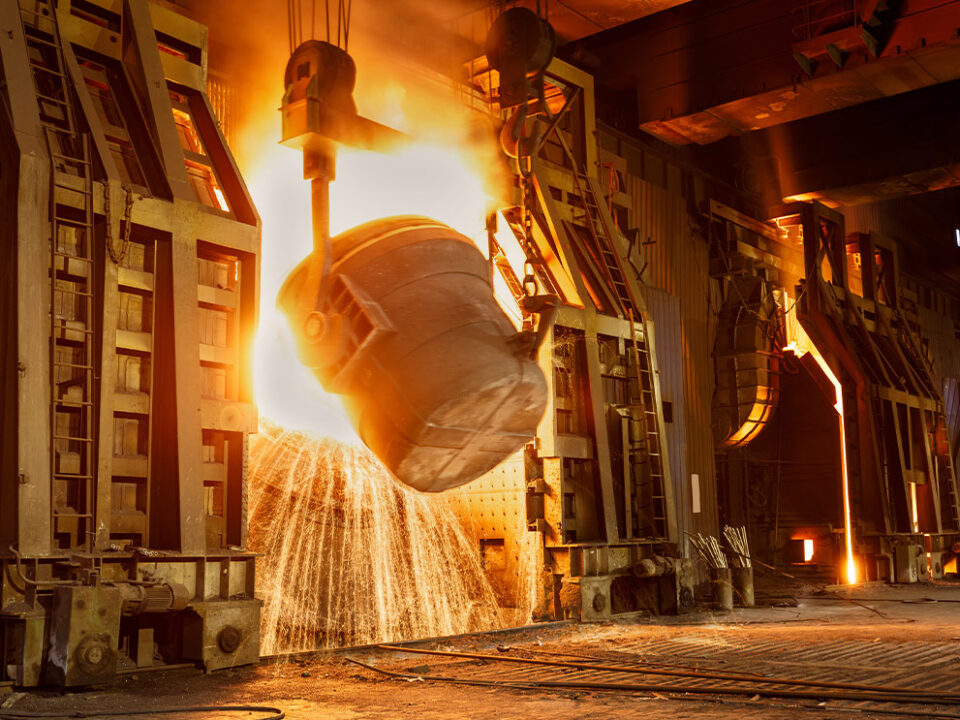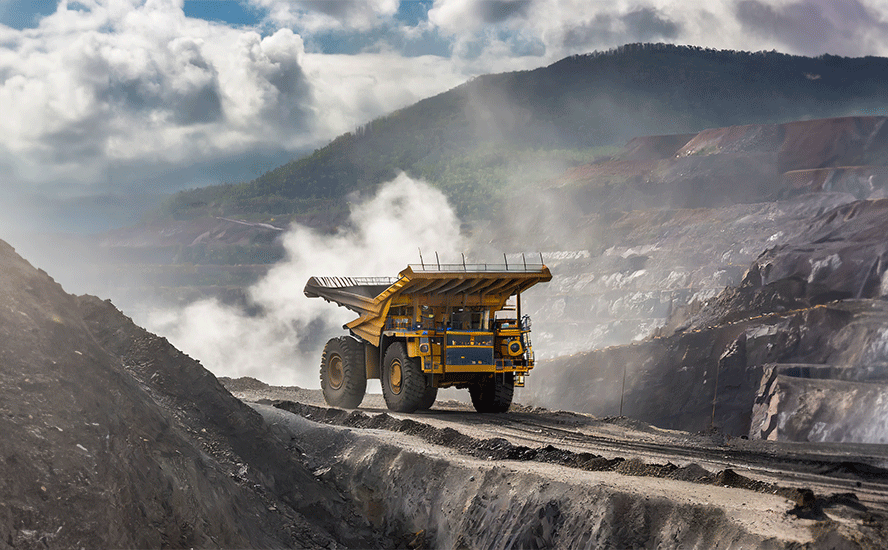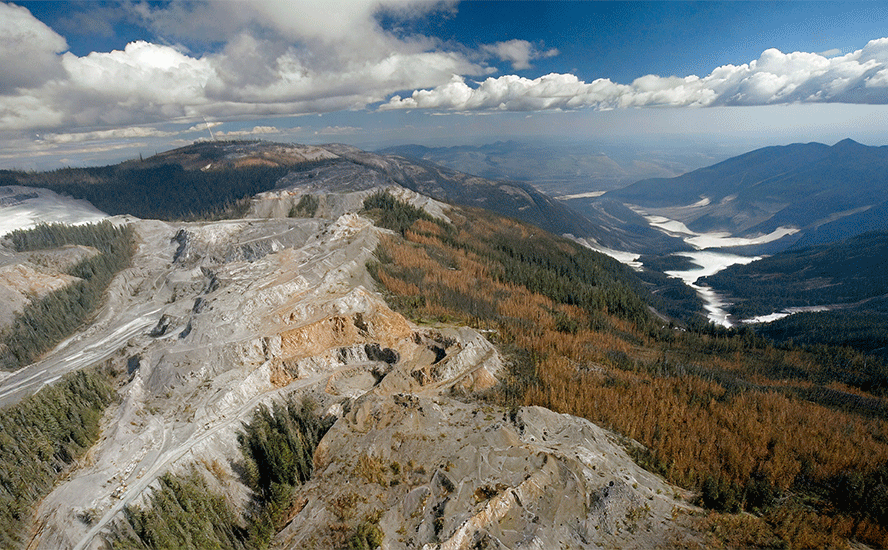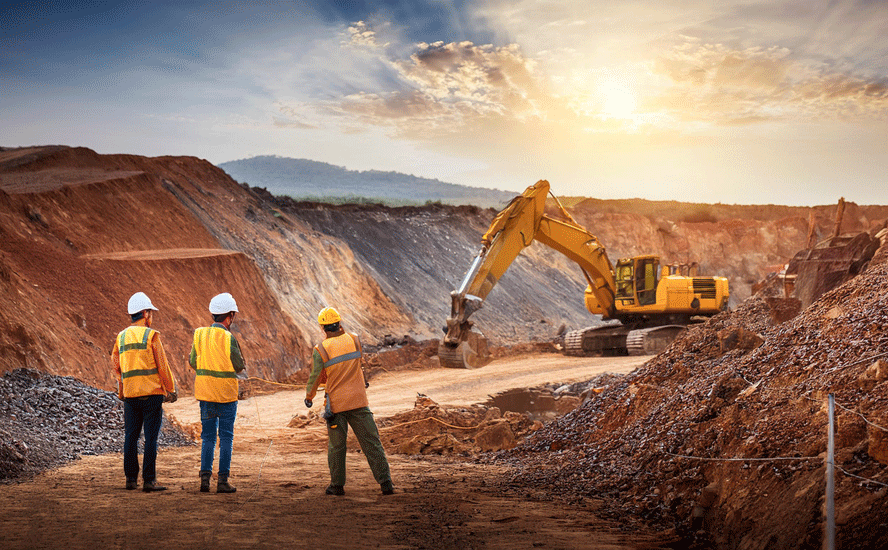Chinese growth lights fire under copper price

2019.04.19
Copper bulls are running this week, as the red metal used in plumbing, wiring and transportation hit a fresh 10-month high. Meanwhile there are other signs of strength in the price of copper, which is seen as a good predictor of future economic growth.
The base metal is called “Dr. Copper” for its ability to diagnose the health of the world economy, since it is so much in demand for new construction, telecommunications and other infrastructure that is built when economies grow.
However, the slowdown in Chinese economic growth has been a concern to base metal miners and investors. In 2018 China’s economy grew at just 6.6%, the lowest level in 28 years. This is important for copper because China consumes nearly half of the world’s supply. If China’s growth is slowing, it’s a safe bet copper is too.
Yet there was room for optimism on Wednesday, after the release of key Chinese economic data indicating the promise of higher demand.
Various sources reported through the week that industrial production grew from 5.3% last February, 2018 to 8.5% in March. New construction starts were 18% higher in March 2019 versus March 2018, fixed investment (good for commodities) increased by 6.3%, and bank lending hit an all-time high of $870 billion in the first quarter. China’s growth was 6.4% in Q1, defying expectations of slack GDP performance.
The good economic news was enough to lift copper futures 2% higher, reaching $2.95 per pound or $6,604 a tonne, on the Comex in New York – the best performance since last July.
Supply disruptions likely
Price spikes are great, but the longer-term story for copper is all about supply.
As we wrote in The coming copper crunch, by 2035, without major new mines up and running to replace the ore that is being depleted from existing copper mines, we are looking at a 15-million-tonne supply deficit by 2035. Four to six million tonnes of added capacity are needed by 2025.
This year, output is expected to be curbed by a strike at Peru’s Las Bambas mine and disruptions at other mines in Chile, Spain and the DRC, according to Capital Economics, a macroeconomics research firm.
The CEO of Antofagasta, a major copper miner in Chile, isn’t expecting strikes at his company’s operations but “We think this year there will be bigger disruptions than last, which was unusually tranquil,” Ivan Arriagada was quoted by Mining Weekly at CRU’s World Copper Conference in Santiago.
That, plus heavy rains in the arid plains of northern Chile, and two months of indigenous protests at MMG’s Las Bambas mine in Peru, will likely present a supply problem, Arriagada said.
“We’re going to have a supply deficit that will begin to show itself in the next 24 months, which will not only support the current copper price but also, send it upwards.”
Citi Bank has said it expects the bellwether metal to rally 10% over the next three to six months, during which time the Chinese and US trade delegations should come to an agreement on the year-long trade dispute.
That would put copper at $6,700 a tonne this year due to 2% growth in Chinese demand “led by strong growth in late cycle construction completions and power infrastructure investment,” Citi said, adding that growth in electric cars will buttress copper needs.
The bank also predicts copper inventories, which last month dragged a 10-year low, will fall further in the second quarter and leave the copper market in a deficit of 200,000 tonnes this year and next.
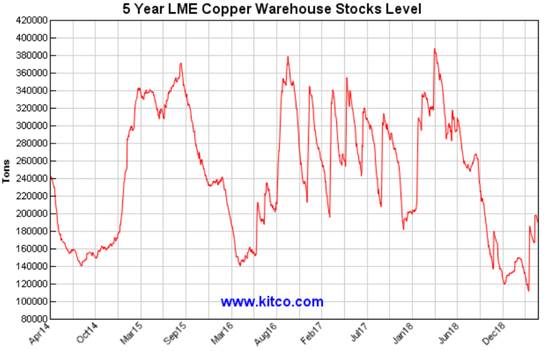
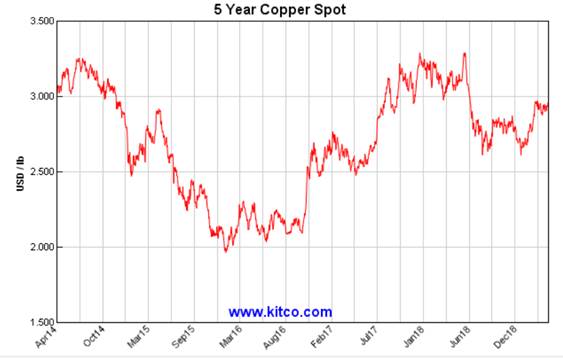
Morgan Stanley recently joined Citi and Goldman Sachs in copper’s bullish camp. Morgan Stanley is projecting a 14% upside for copper in 2019 and upgraded the shares of major US copper miner Freeport McMoran, while Goldman upgraded Rio Tinto, which has five copper mines including Bingham Canyon in Utah, Oyu Tolgoi in Mongolia, and the Resolution copper mine in Arizona it is developing with BHP.
Chinese copper imports
Another factor affecting copper prices to the upside, is robust demand from Chinese smelters. Hit by a series of delays last year, Chinese copper smelting expansions are ramping up, requiring concentrate to smelt into saleable end uses. Major smelters starting up include Chalco’s Ningde, Lingbao Jincheng Metallurgical and Tongling’s Ausmelt project, Metal Bulletin said.
Data published over the weekend showed imports of unwrought copper jumped 26.5% in March compared to the same month last year. Shipments of copper concentrate and copper ore increased by 10.4% in March, and a healthy 20% in the first quarter – on track to beat the record 19.7 million tonnes of copper concentrate imports set in 2018, MINING.com reported.
Copper demand for EVs
Meanwhile the demand for copper is not expected to let up. Consider the rapidly growing need for the base metal in electric vehicles.
A typical EV has four times as much copper as a regular gas-powered vehicle. Over the next decade copper demand is expected to increase between 3 and 5 million tonnes. After that, copper demand for EVs alone could reach 11 million tonnes. The International Copper Association says over 40 million charging ports will be needed over the next 10 years, consuming an extra 100,000 tonnes of copper annually, by 2027. But we are facing a copper deficit as early as 2020.
Imagine a world without copper. There would be no copper wiring, therefore no means of electrifying new buildings, no material for solder, no computers, TVs, circuit boards, semiconductors, microwaves, modems and routers.
The transportation industry is reliant on copper for components of airplanes, trains, cars, trucks and boats. A commercial airliner has up to 190 kilometers of copper wiring, while high-speed trains use up to 10 tonnes of copper per kilometer of track.
In electric vehicles, copper is a major component used in the electric motor, batteries, inverters, wiring and in charging stations. Without a copper substitute (there is none), the shift from gas-powered cars to EVs would abruptly stop.
Even if we mined every last discovered, and undiscovered, pound of land-based copper, the expected 8.2 billion people in the developing world would only get three quarters of the way towards copper use parity per capita with the US, if we assume 10 billion people by 2050.
Unless new investments arise, existing mine production will drop from 20 million tonnes to below 12 million tonnes by 2034, leading to a supply shortfall of more than 15 million tonnes. That’s because over 200 copper mines are expected to run out of ore before 2035, with not enough new mines in the pipeline to take their place.
Clearly it’s a good time to be a copper miner or explorer, since rising copper prices are bound to influence the stock prices of both majors and juniors.
Richard (Rick) Mills
Ahead of the Herd Twitter
Ahead of the Herd FaceBook
Legal Notice / Disclaimer
This document is not and should not be construed as an offer to sell or the solicitation of an offer to purchase or subscribe for any investment. Richard Mills has based this document on information obtained from sources he believes to be reliable but which has not been independently verified. Richard Mills makes no guarantee, representation or warranty and accepts no responsibility or liability as
to its accuracy or completeness. Expressions of opinion are those of Richard Mills only and are subject to change without notice. Richard Mills assumes no warranty, liability or guarantee for the current relevance, correctness or completeness of any information provided within this Report and will not be held liable for the consequence of reliance upon any opinion or statement contained herein or any omission. Furthermore, I, Richard Mills, assume no liability for any direct or indirect loss or damage or, in particular, for lost profit, which you may incur as a result of the use and existence of the information provided within this Report.
Legal Notice / Disclaimer
Ahead of the Herd newsletter, aheadoftheherd.com, hereafter known as AOTH.Please read the entire Disclaimer carefully before you use this website or read the newsletter. If you do not agree to all the AOTH/Richard Mills Disclaimer, do not access/read this website/newsletter/article, or any of its pages. By reading/using this AOTH/Richard Mills website/newsletter/article, and whether you actually read this Disclaimer, you are deemed to have accepted it.








